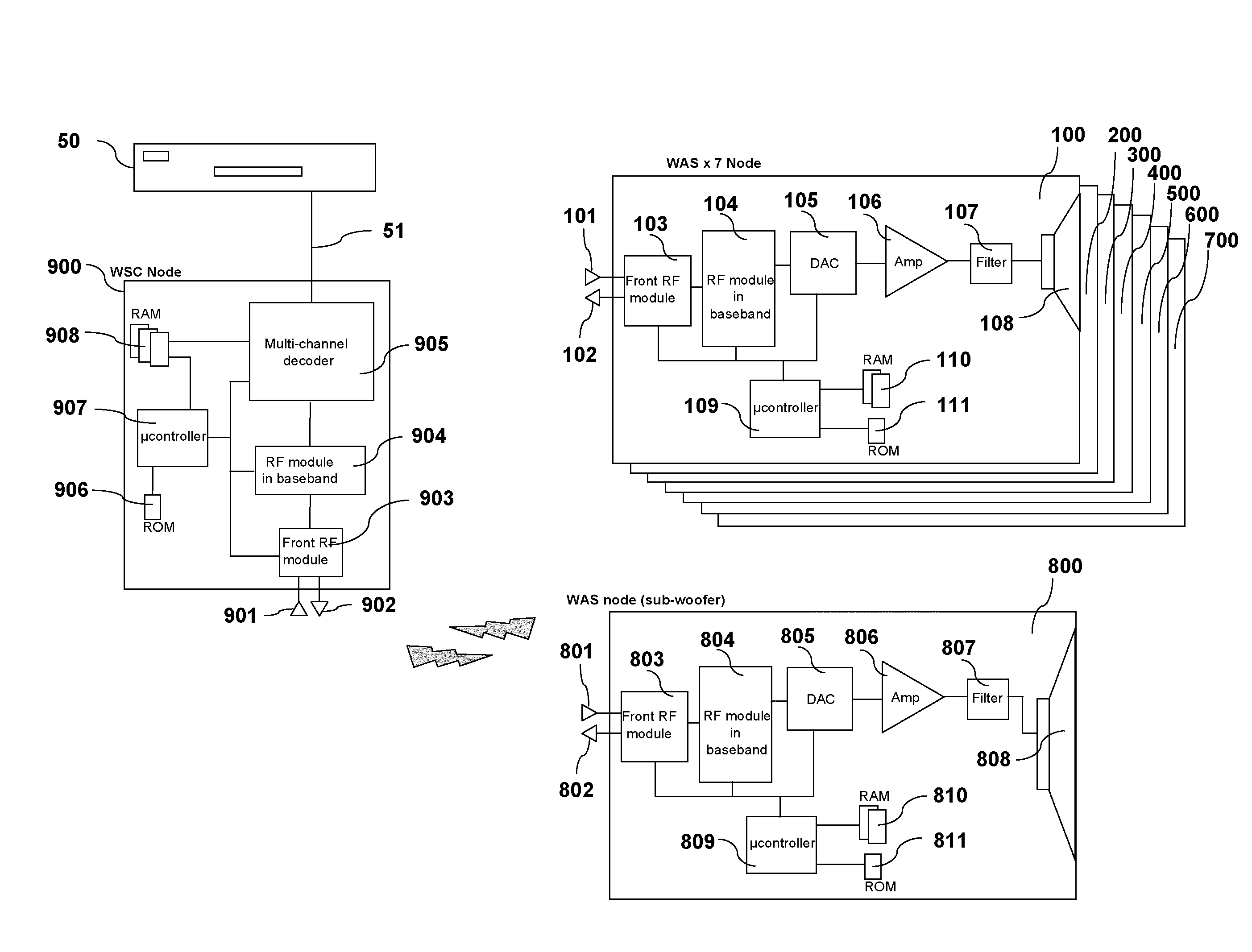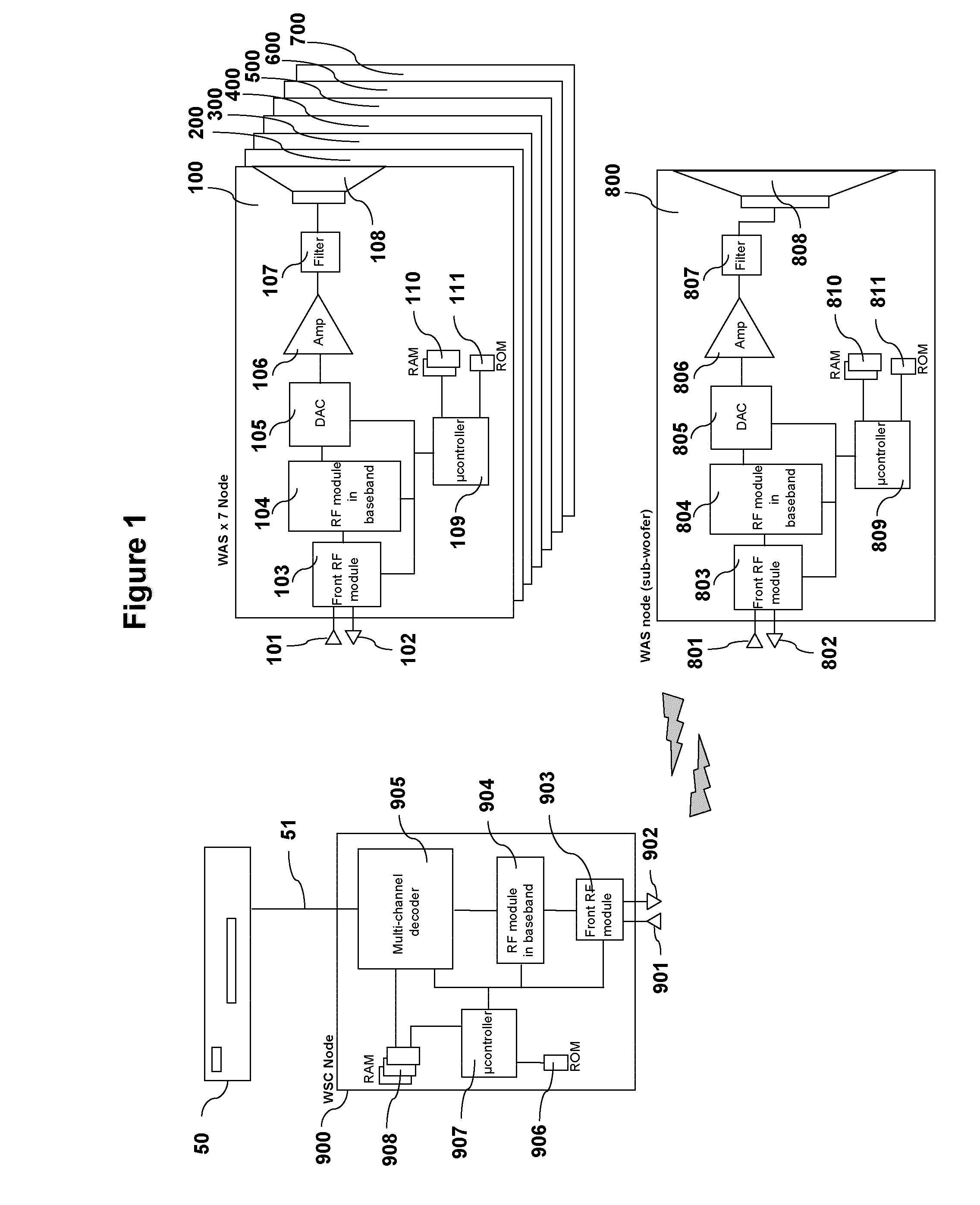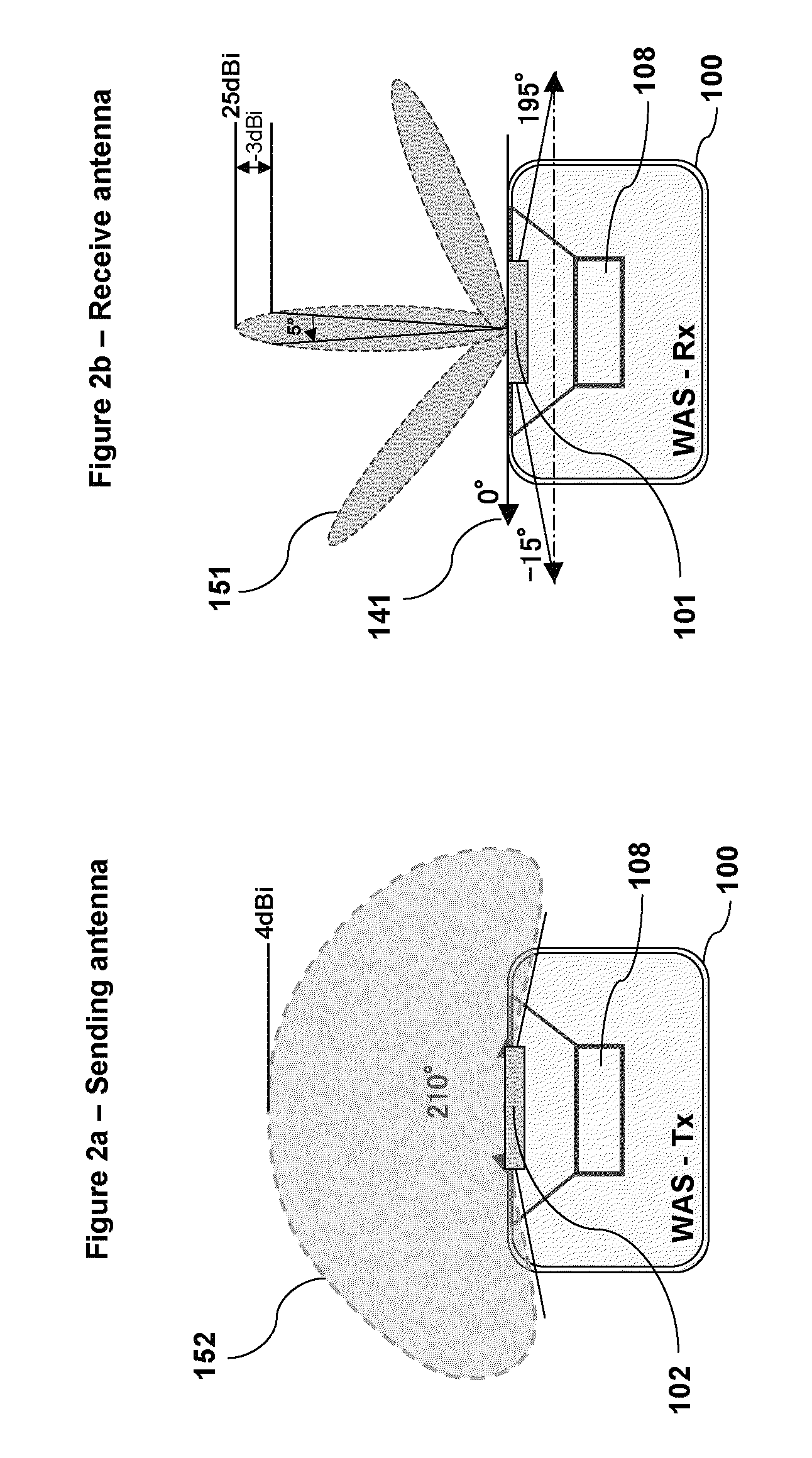Method for selecting an effective angle of reception of a directional antenna of a receiver node, corresponding storage means and receiver node
a receiver node and effective angle technology, applied in direction finders using radio waves, wireless commuication services, instruments, etc., can solve the problems of inability to communicate between these two nodes, limited range of about 10 meters, complex and costly, etc., and achieve the greatest possible divergence
- Summary
- Abstract
- Description
- Claims
- Application Information
AI Technical Summary
Benefits of technology
Problems solved by technology
Method used
Image
Examples
first embodiment
[0231]The algorithm presented with reference to FIG. 9 is a first non-restrictive embodiment of the present invention. According to this algorithm, the choice of the antenna angles is based on a predetermined angular proximity threshold. In this first embodiment, the first combination of antenna angles identified as responding to the criterion of angular proximity is selected.
second embodiment
[0232]In a second embodiment, an algorithm based on the selection of the antenna angles having the maximum angular divergence can be used. In this embodiment, the step 17 would consist of recording the sum of the absolute values of angular divergence for all the combinations of antenna angles provided (allocated). Ultimately, the combination of antenna angles corresponding to the sum of the absolute values giving the maximum result would be chosen.
[0233]For example, let Si,j,k be the sum of divergence values for a given combination (i,j,k). We then get:
Si=1, j=1, k=1=(|A1−B1|+|A1−C1|+|C1−B1|)
S1=1, j=1, k=2=(|A1−B1|+|A1−C2|+|C2−B1|)
Si=2, j=2, k=2=(|A2−B2|+|A2−C2|+|C2−B2|)
[0234]The combination of antenna angles (i,j,k) chosen will be the one having the corresponding Si,j,k with the greatest value.
third embodiment
[0235]In a third embodiment, an algorithm based both on a predetermined angular proximity threshold and on the selection of the antenna angles having the maximum angular divergence can be chosen. In this embodiment, the step 17 would in a first stage consist in identifying all the combinations of antenna angles for which the absolute values of the angular divergences are greater than the angular proximity threshold. Then, in a second stage, the step 17 would consist in recording the sum of the absolute values of the angular divergences of each of the combinations of antenna angles identified. Ultimately, the combination of antenna angles corresponding to the sum of the absolute values giving the maximum results would be chosen.
[0236]In resuming the above example, this amounts to choosing, in this third embodiment, the combination of antenna angles (i,j,k) having the Si,jk values corresponding to the greatest of the combinations of angles for which the divergences and |Ai−Bj|, |Ai−Ck...
PUM
 Login to View More
Login to View More Abstract
Description
Claims
Application Information
 Login to View More
Login to View More - R&D
- Intellectual Property
- Life Sciences
- Materials
- Tech Scout
- Unparalleled Data Quality
- Higher Quality Content
- 60% Fewer Hallucinations
Browse by: Latest US Patents, China's latest patents, Technical Efficacy Thesaurus, Application Domain, Technology Topic, Popular Technical Reports.
© 2025 PatSnap. All rights reserved.Legal|Privacy policy|Modern Slavery Act Transparency Statement|Sitemap|About US| Contact US: help@patsnap.com



